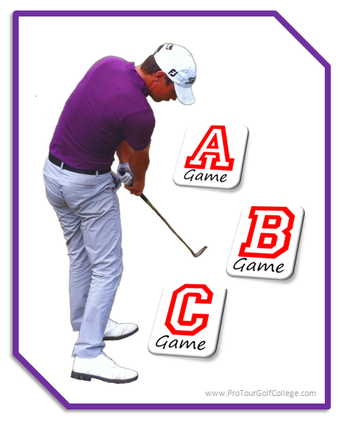 It costs a lot of money to play full time as a professional golfer. I was discussing this subject recently with one of our students at Pro Tour Golf College and he explained to me that he read a tweet from one of the European tour players who had suggested that it costs him somewhere between 100,000 and 200,000 pounds per year to play on that tour. So we did the sums to work out where the expenses were and without too much trouble we got over 100,000 pounds for travel, meals, accommodation, caddy expenses etc. for just thirty weeks on the road. Turning professional is a huge financial commitment first and foremost and shouldn't be taken lightly. Turning Professional - Are You Ready? Many amateur golfers turn pro when they think they’re ready because they have had a reasonable degree of success in amateur tournaments and basically had enough of playing the same amateur tournaments every year. They are often encouraged to make the leap to pro golf by family and friends and for many young amateur golfers that turn professional this hasty decision can have dire financial and emotional consequences. The golfers who turn pro are normally high ranking amateur golfers who have been travelling to amateur tournaments on the sponsorship of amateur golf bodies and/or their parents. 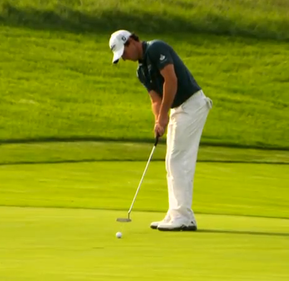 Rory McIlroy like many of the best amateurs golfers benefited from amateur golf associations paying for most of his travelling and accommodation expenses only after significant financial investment from his parents. This allowed him to gain experience playing in tournaments without the normal pressure of expenses that he would be exposed to. When amateurs make the decision to turn pro they have to secure significant sponsorship from family or friends to help them to travel from one tournament venue to the next for the best part of a year. We have known of quite a few male and female golfers who took the parents credit card on tour with them and racked up enormous bills as a results of not being able to make cuts and checks on a professional golf tour. Even Justin Rose who as an amateur finished 4th in the 1998 Open Championship missed his first 21 cuts in a row as a professional! So how do you know when it is time to make the leap from amateur golfer to professional golfer? By now many of you who read our weekly blogs will know of our golf success formula at Pro Tour Golf College;  Well, we have a simple test based on years of studying the results from minor through to major professional golf tours. You will need to pass this test if you want to seriously consider playing professional golf and succeed at it! Before you decide to turn pro you need to look very closely at your competitive score average over the previous 12 months to determine whether your game is good enough to turn professional. What was you competitive score average in tournaments? The Three Games of Professional Golf At Pro Tour Golf College we teach our students to understand that on each of the 4 days of a tournament that their game could be rated A, B or C. Below we will explain what this rating means and how it relates to competing successfully on a professional golf tour. We call this "The Three Games of Professional Golf." 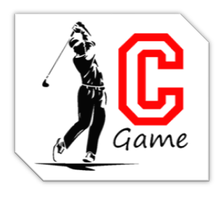 C GAME STANDARD < 75 When you play what you consider your absolute worst golf, when nothing seems to be going the way you want and you just want to get off the golf course and go home with your tail between your legs, your golf score for the day shouldn't be higher than 75. In pro golf you will play a lot of rounds of golf in a year in all types of conditions and on all types of golf courses and the likelihood of you scoring higher than your expectations is that it will happen more times than you will imagine. We call this your ‘high score average’ and it is essential that you keep this score down to 75 or better if you want to be a successful professional golfer. 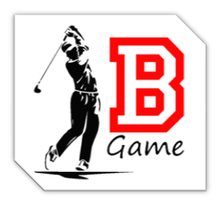 B GAME STANDARD < 72 B Game Standard is your average standard of golf and this standard will be 72 or better. This means that when you are comfortable and statistically maintaining your average level of performance you will play to slightly better than a par standard in golf tournaments. You will need to achieve this standard 60 percent of the time over the course of a year. If your standard for your average game is higher than par then you should seriously consider staying in the amateur game for longer so you can develop your skills and experience further. Since virtually every professional tournament you play in will have a cut of par or better, if you cannot achieve this baseline standard then there is no reason for turning professional as you will not make cuts and prize money. But you will spend money... 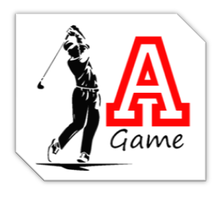 A GAME STANDARD < 70 Your A game Standard is the best golf you can play in a golf tournament and this doesn't happen very often in a year. This standard is the lowest score average you can produce over 4 rounds of tournament play and could conceivably be from 10 to 20 under par or even better. When professional golfers win tournaments or finish high up in the money list they are not performing to their average - they are playing a good deal better than it. There is a misconception that the A Game Standard is the standard in professional golf and this is quite simply a long way from the truth. The A Game Standard will produce low putting averages and high birdie averages and you will have fewer bogeys and double bogeys over 4 rounds of golf. Luke Donald had just 14 double bogeys over 1,152 holes played on the PGA Tour in 2012, and nothing worse than a double bogey for the year. Over 4 tournament rounds you might produce one or two rounds that are close to your average but it is likely that you will be playing a lot better than your average over the whole week. Keep in mind that if you play in round one of a tournament and produce a C Game Standard, then you will know that in round two you will have to play to your A Game Standard to make the cut. No cut made-no money made! 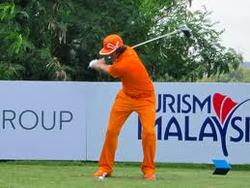 Score Bounce Back Ability This is the reality of professional golf. The trajectory of your golf score average is not linear but more like a wave motion. When you produce a high score average you must produce a low score average to stay in the game. This is normal bounce back mentality of professional golf and one of the key mental skills that you must develop to be competitive on a professional golf tour. Have a look at the graph (Below) of the first 6 tournaments Ricky Fowler played on the PGA Tour in 2012. You can see that he started with 9 competitive rounds that were around his competitive score average and then threw in a C Game score of 76. Notice the very next round is back around his average which unfortunately in this case wasn't low enough that week to make the cut at the Pebble Beach Pro Am. Ricky played in 23 tour events on the PGA Tour in 2012 and made the cut in 20 of the events he played in (87 percent) and earned over 3 million dollars. This graph perfectly describes the inconsistent nature of competitive scoring in tournaments and every professional golfer has a profile that looks similar to this. The only difference; how low your competitive score average is. The Bottom Line The professional game is very different to amateur life as many accomplished amateurs very quickly realize. Where they might have been in the top 10 percent of amateurs in their country, when they turn pro they will more than likely will be in the bottom 90 percent of professionals. We have also noticed that the biggest difference between the amateur golfer mind-set and pro golfer mind-set is that when amateurs don’t play good enough in an amateur tournament they can forget about it and move on to the next event. We call it the "Bad Score-Good Score Attitude." Professional golfers don’t have the luxury of forgetting about it this way because it always costs them money. When they have a C Game Standard they have to find an A Game Standard the next day to stay competitive. This is professional golf and where you need to brutally honest about the standard of your game currently. Professional golf is business, and business is always about the bottom line. If you can't produce the standard required to compete, then you will go broke. The following Pro Tour Golf College model describes what we call "The Pro Standard Test." Using this simple model you can easily determine where your game is currently and it will help you to decide whether it is good enough now to compete in the pro ranks now or wait until you can play a little better in the three games.
Remember this is the minimum standard required to compete on a professional golf tour. When you watch golf on television you're watching professionals playing to their A Game Standard. I hope this helps you to make an informed decision regarding a career as a professional golfer. If you have any questions about playing professionally then please feel free to contact us at [email protected] And if you enjoyed the article then please help us to spread the message to serious golfers by sharing it with your friends via email, Twitter, Facebook and other medias. Lawrie Montague and David Milne - Pro Tour Golf College Your Success On Tour Is Our Business Comments are closed.
|
Archives
June 2019
|
Proudly Supported By
Copyright © 2011 - 2018 Pro Tour Golf College
Website Managed By Golf Performance Media
All Rights Reserved
Website Managed By Golf Performance Media
All Rights Reserved
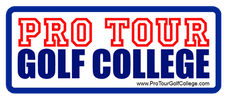
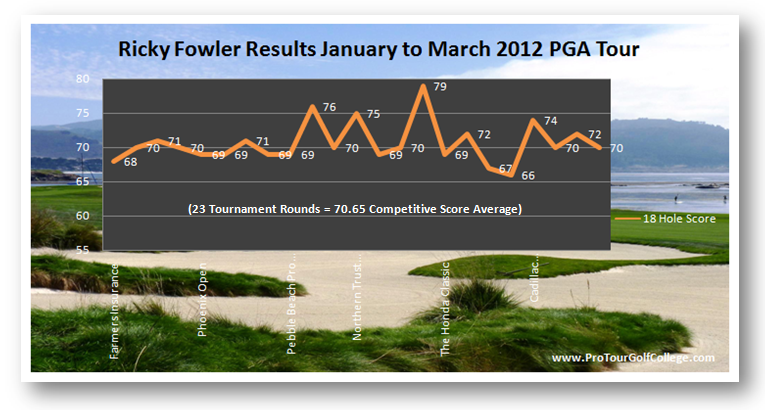
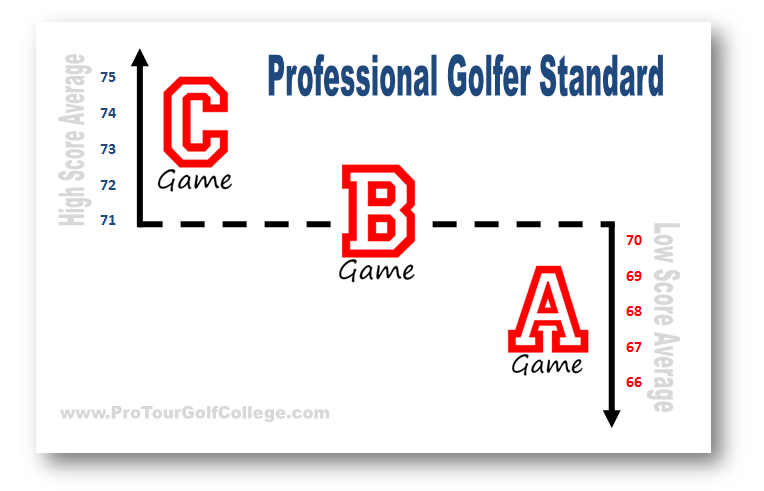
 RSS Feed
RSS Feed



